Aluminum is an incredibly useful material in modern fabrication — light, corrosion-resistant, and versatile. But welding aluminum is quite different from welding steel, and it brings its own set of unique challenges and technical demands. In this guide, I explain the principles, difficulties, and best practices of aluminum welding, drawing on widely accepted welding knowledge. This should be useful for welders, engineers, and procurement or quality-control managers evaluating aluminum-welded components.
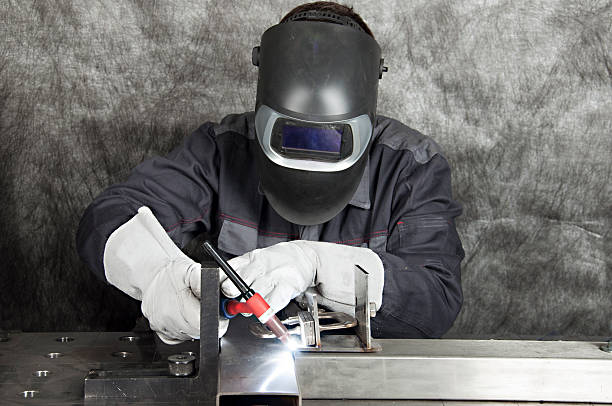
I. Why Choose Aluminum (and Its Alloys)?
Aluminum (and its alloys) offers a high strength-to-weight ratio, making it ideal for applications where weight reduction is critical yet strength cannot be compromised.
It provides excellent corrosion resistance (thanks to natural passivation) and good thermal and electrical conductivity — properties useful in marine, automotive, structural, and electrical applications.
Aluminum can be alloyed to meet a wide range of mechanical and fabrication requirements; common wrought aluminum-alloy series (like 5xxx, 6xxx) offer good weldability for many industrial uses.
Because of these benefits, aluminum remains widely used across industries — aerospace, automotive, transportation, consumer goods, structural fabrication, etc.
II. What Makes Aluminum Welding Challenging?
Welding aluminum is more demanding than welding steel. The main challenges stem from its material properties.
Key challenges include:
Oxide layer formation. Aluminum quickly forms an oxide film (aluminum oxide) in air. That oxide melts at much higher temperature than the base metal, which means if it's not removed before welding, it may be trapped in the weld, causing lack of fusion or weak/defective metallurgical bonds.
High thermal conductivity & low melting point. Aluminum dissipates heat rapidly, so heat from the weld zone spreads quickly — making it harder to maintain a stable weld pool. This makes aluminum prone to burn-through, warping, or poor penetration if heat input isn't properly controlled.
Gas absorption and porosity. Molten aluminum readily dissolves hydrogen; as the weld pool solidifies, hydrogen can escape or be trapped, leading to porosity (gas pores) which weaken the weld.
Contamination sensitivity. Any oil, grease, moisture, or other contaminant on base metal or filler, or residual humidity in shielding gas, will raise risk of defects.
Alloy-dependent weldability. Not all aluminum alloys are equally weldable. Some high-strength alloys (e.g. certain 2xxx or 7xxx series) are prone to cracking or liquation cracking under fusion welding.
Thus, aluminum demands meticulous preparation, careful process and parameter selection, and skilled technique.
III. Which Welding Processes Work for Aluminum?
Aluminum and its alloys can be welded by several processes — each with strengths and limitations.
1) Arc-Based Fusion Welding:
TIG (GTAW, gas-tungsten-arc welding): Widely favored for aluminum. Using AC (alternating current) with 100% argon shielding, TIG enables precise control and is effective for both thin and thick sections. Since TIG does not require mechanical wire feeding, the risk of wire-feed issues (common with softer aluminum wire) is avoided. The AC current helps “clean” the oxide layer during welding, improving fusion quality.
MIG (GMAW / GMAW-based methods): Common for faster production and higher deposition rates. Because aluminum wire is soft and has low column strength, special feeding equipment (spool gun or push-pull gun) is often required to avoid wire-feeding problems. Pure argon shielding is typically used. Clean base metal, clean filler, and proper gas coverage are vital to avoid porosity.
However for MIG in industrial settings, certain transfer modes and parameters are critical: for example, standard short-circuit transfer (used often with steel) tends to cause poor fusion or porosity with aluminum, and thus is generally avoided. Instead, pulsed-MIG or spray-transfer modes are preferred when appropriate, especially on thicker aluminum.
2) Solid-State Welding Techniques:
Friction Stir Welding (FSW) and related friction processes: Because these are solid-state (no melting), they avoid many of the fusion-welding problems (oxide inclusion, porosity, hot cracking) — and can weld alloys that are difficult under traditional fusion welding (e.g. high-strength 2xxx / 7xxx series) more reliably.
Beam Welding (Laser or Electron Beam): Fusion methods using high-energy density beams — laser or electron-beam — are used for special applications. Their high power density allows narrow, deep-penetration welds with small heat-affected zones, which is helpful when thermal distortion must be minimized or on crack-sensitive alloys. However, joint design, filler compatibility (if used), shielding (for laser), and strict parameter control are prerequisites.
Thus, depending on alloy type, joint geometry, production volume, and quality requirements, the “best” method may vary.
IV. Best Practices: Preparation, Parameter Control, and Joint Design
Success in aluminum welding is heavily dependent on preparation and process control. Here are best practices derived from collective welding knowledge:
1) Material Preparation and Storage:
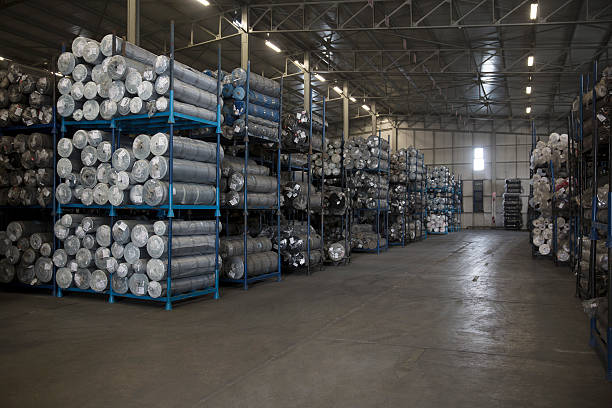
Cleanliness is essential. Remove any oxide, oil, grease, moisture from the base metal using a solvent (e.g., acetone) or mild alkaline cleaner, followed by wiping and cleaning with a stainless-steel wire brush dedicated to aluminum.
Use dedicated tools. Wire brushes, grinders, and cleaning tools used for aluminum should not be used for steel or other metals, to avoid cross-contamination. Many welders keep separate tools for aluminum.
Store base metal and filler metal properly. Keep materials in a dry environment to avoid condensation or moisture pickup. It’s recommended to bring materials into the welding environment at least 24 hours ahead so they acclimate and minimize moisture condensation.
If delay between cleaning and welding: If you clean but do not weld immediately, re-brush/clean the joint before welding — because oxide can reform quickly and airborne contamination may accumulate.
2) Control Heat Input and Welding Parameters:
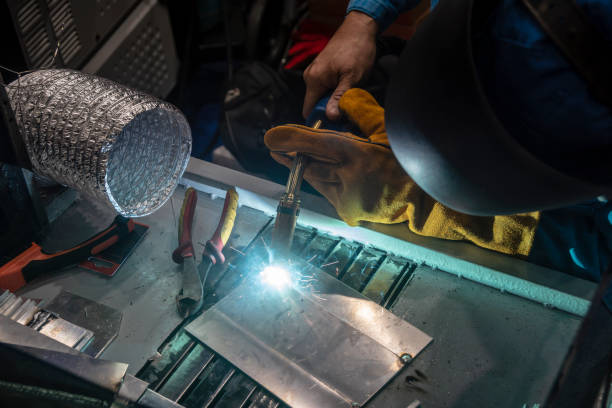
Because aluminum conducts heat rapidly, controlling heat input is key: too little heat causes lack of fusion; too much leads to burn-through or distortion.
In MIG welding, avoid using conventional short-circuit transfer (common in steel MIG). Instead, consider pulsed-MIG or spray-transfer (for thicker sections), which deliver a more stable weld pool and better penetration with less porosity risk.
Use heat sinks or backing bars when welding thin sections to prevent burn-through and manage heat concentration.
In TIG welding, select a pure tungsten electrode, maintain proper argon shielding, and ensure the filler rod/wire is clean and matched to the alloy under welding.
3) Joint Fit-up and Design:
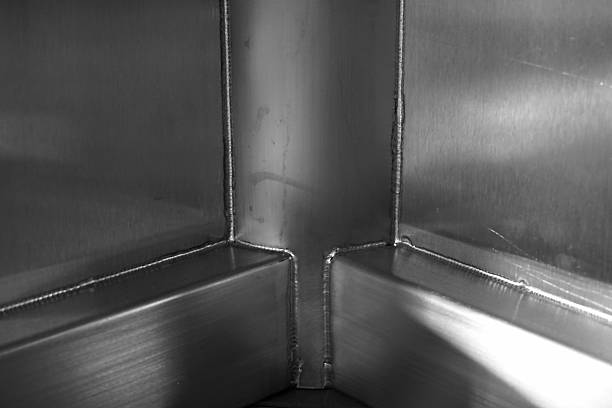
Ensure tight, clean fit-ups with minimal gaps — poor fit-up increases risk of poor fusion or excessive filler requirement.
For thin-gauge aluminum, consider use of chill bars, clamps, or backing fixtures to distribute heat and avoid warping/distortion.
For alloys prone to cracking under fusion welding (e.g. some 6xxx, 7xxx), consider solid-state joining methods (like friction stir) or, if fusion welding is necessary, use compatible filler alloys and control heat input carefully.
4) Shielding and Filler Wire Considerations:
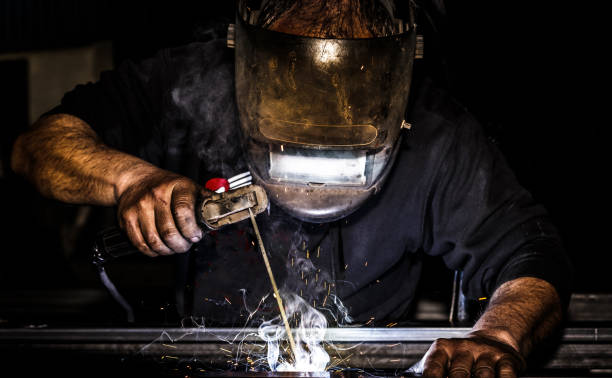
Use 100% argon shielding gas for TIG or MIG welding of aluminum — this ensures a clean, inert atmosphere to prevent oxidation or contamination in the weld pool.
Select filler material compatible with the base alloy. For many common aluminum alloys and general fabrication, fillers matched to the alloy series (or matching mechanical/corrosion requirements) produce better weld strength, corrosion resistance, and aesthetic appearance.
Store filler material in dry conditions; if filler wire picks up moisture, hydrogen uptake during welding may increase, raising porosity risk.
V. Common Defects and How to Prevent Them
Welding aluminum can lead to a variety of defects. Understanding these helps in both planning and quality control.
| Defect / Issue | Cause | Prevention / Mitigation |
|---|
| Porosity / Gas Pockets | Absorption of hydrogen or trapped gas during solidification | Dry, clean base & filler; proper argon shielding; bake filler if necessary; avoid moisture. |
| Lack of Fusion / Incomplete Penetration | Insufficient heat, wrong parameters, poor oxide removal, or poor joint fit | Pre-clean oxide; ensure proper heat input and travel speed; adjust arc parameters; use correct filler. |
| Burn-through / Over-penetration | Excessive heat, slow travel speed, thin material | Use heat sink/backing; reduce heat input; increase travel speed; manage current carefully. |
| Distortion / Warping | High thermal conductivity and expansion, uneven heating | Use proper fixturing/clamps; weld in a sequence; use backing bars or heat sinks. |
| Hot Cracking / Solidification Cracks (especially in certain high-strength alloys) | Alloy composition, improper filler or weld procedure, excessive heat input | Use compatible filler; control heat input; consider solid-state welding for crack-sensitive alloys. |
VI. Choosing the Right Welding Method — Based on Application
Which welding method to use depends on material alloy, thickness, required joint quality, production volume, and final application. Here’s a rough guideline:
Thin sheet / sheet-metal fabrications, aesthetic welds, small builds, prototypes → TIG welding (for precision, control, minimal spatter)
Production work, medium-thickness plate, structures requiring higher deposition rate → MIG (pulsed or spray-transfer) with proper feeding equipment and shielding
High strength alloys, critical structural parts, or when minimal distortion / high-quality joints are required → FSW or other solid-state welding; or laser / electron-beam welding if available and suited for geometry
Large assemblies or volumetric production (e.g. transportation, automotive, marine) → Evaluate combination: MIG/TIG for simpler joints, solid-state for high-strength or crack-sensitive components
Selection should consider not just weldability, but also cost, throughput, repeatability, distortion tolerance, and required mechanical performance.
VII. Practical Workflow for Aluminum Welding
Here’s a recommended step-by-step workflow summary:
Material and filler storage: Store base metal and filler wire dry. Bring into welding environment prior to weld to avoid condensation.
Cleaning & surface preparation: Remove oil, grease, moisture via solvent (e.g. acetone) or mild cleaning solution → wipe dry → remove oxide layer with dedicated stainless-steel wire brush → rinse/dry thoroughly.
Joint fit-up & fixturing: Fit joints with minimal gaps; clamp and use backing or heat-sinks if thin material; plan weld sequence to minimize distortion.
Equipment & parameter setup:
Use argon shielding (100%).
For TIG: pure tungsten electrode, AC (if applicable), proper argon flow, clean filler rod.
For MIG: use spool-gun or push-pull feeder; select pulsed/spray-transfer mode; optimize wire feed and travel speed; ensure shielding coverage.
Welding execution: Maintain appropriate travel speed, heat input, angle (e.g. for MIG pushing at slight angle), and use multi-pass techniques when needed. Use backing/heat sink for thin sections.
Post-weld cleaning & inspection: Remove oxides or soot; inspect bead appearance, penetration, fusion, and for porosity/cracks. Perform NDT or destructive tests if required.
If needed — heat treatment or post-weld treatment (for heat-treatable alloys): Depending on alloy and application, heat treatment or aging may be required to restore mechanical properties after welding.
Conclusion: Aluminum Welding — Achievable with Discipline and Proper Approach
Aluminum welding is not “rocket science,” but it is more demanding than welding steels or simple ferrous metals. Success comes from respecting aluminum’s differences: high thermal conductivity, oxide reactivity, hydrogen absorption, rapid heat dissipation, and sensitivity to contamination and heat input.
With proper surface prep, suitable welding process selection (TIG, MIG, FSW, or beam-based), correct parameters, careful joint design, and attention to detail — aluminum can be welded reliably, with sound mechanical integrity and acceptable appearance. Industries around the world rely on aluminum welded structures — from automotive to marine to structural fabrication — because when done right, aluminum delivers a balance of light weight, strength, and durability that few materials match.
Related articles:
1. AC TIG Welders for Aluminum Welding
2. Welding Aluminum vs. Welding Steel: A Complete Comparison
3. Welding Aluminum vs. Welding Steel: Key Differences
4. MIG and TIG Guidelines for Aluminum Welding
5. Pulsed MIG Welding Aluminum and Stainless Steel








